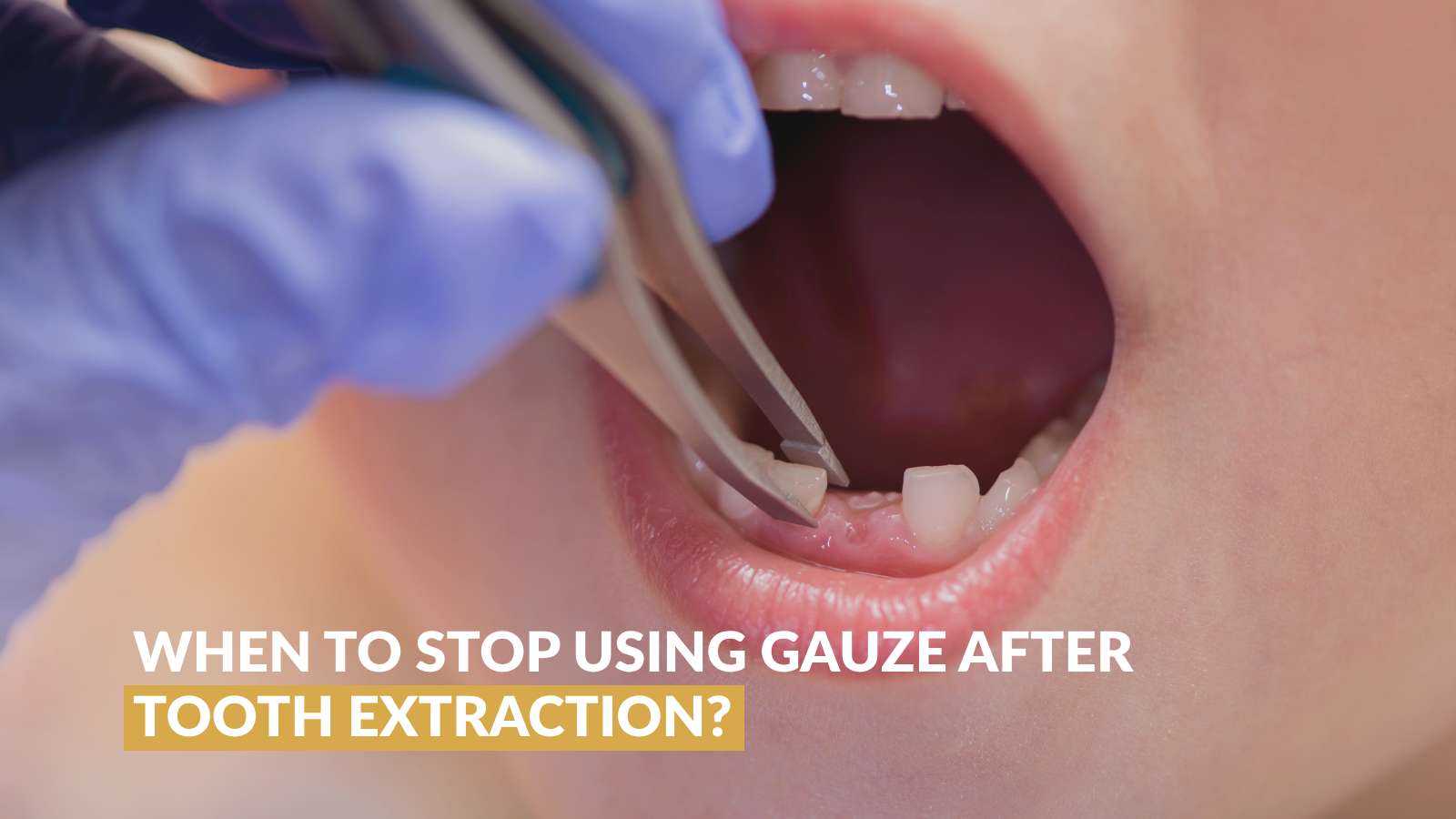
Tooth extraction is a standard dental procedure requiring specific post-operative care to ensure proper healing. One of the critical initial steps is using gauze, primarily to control bleeding and aid in forming a blood clot at the extraction site. However, knowing when to stop using gauze after tooth extraction is essential to your comfort and healing.
Table of Contents
ToggleWhat Is A Tooth Extraction?
An extraction involves removing a tooth from its socket in the jawbone. A dentist or an oral surgeon typically performs it, and it is necessary for various reasons, including severe tooth decay, infection, crowding, or damage.
Role Of Gauze After Tooth Extraction
Understanding how to use gauze for tooth extraction can significantly impact the recovery process, minimizing complications and ensuring a smoother healing period.
After removing a tooth, your dentist will place a piece of sterile gauze over the extraction site. The primary purpose of this gauze is to:
- Control bleeding: The gauze helps to apply pressure to the area, minimizing bleeding.
- Promote clot formation: Keeping the gauze for teeth in place helps a blood clot to form in the tooth socket, which is crucial for healing.
Immediate Post-Extraction Period
In the first few hours after your tooth extraction, it’s typical to need gauze to manage bleeding.
- Initial Placement: Directly after extraction, gauze is placed; you are usually instructed to bite down gently but firmly for about 30-45 minutes.
- First Change: After the initial period, assess the bleeding. Replace the gauze in mouth with a fresh piece, maintaining pressure if it continues.
You may need to change the gauze several times during these first few hours until the bleeding lessens significantly.
Signs to Change the Gauze
- Saturated Gauze: If the gauze becomes soaked with blood, it’s time to change it.
- Persistent Bleeding: Replace the gauze every 30-45 minutes until bleeding subsides to a slow ooze or stops.
Purpose of Gauze Post-Extraction
- Bleeding Control: Gauze is applied directly to the extraction site to absorb blood and help maintain pressure on the wound, which helps slow and eventually stop the bleeding.
- Clot Formation: The pressure exerted by biting down on the gauze helps a blood clot to form in the socket. This clot is crucial as it protects the underlying bone and nerves, serves as a foundation for new tissue growth, and prevents excessive bleeding and infection.
Precautions After Gauze Removal
- Avoid disturbing the clot: Activities such as spitting forcefully, sucking through straws, or smoking can dislodge the clot, leading to complications like dry sockets.
- Soft Diet: Consume soft foods that don’t require vigorous chewing and avoid direct contact with the extraction site.
- Oral Hygiene: Gentle brushing around the site can resume the day after surgery, but avoid rinsing vigorously for at least 24 hours to protect the clot. Saltwater rinses can be used gently after this period to help keep the area clean.
When is it Safe To Eat And Drink?
- Wait Until the Anesthetic Wears Off: Avoid eating or drinking until the numbness from the anesthesia has completely worn off. It prevents you from accidentally biting your cheek or tongue.
- Start with Liquids: Once the numbness is gone, you can start with liquids. Drink plenty of water, but avoid using a straw, as the suction can dislodge the blood clot at the extraction site.
- Soft Foods: Begin eating soft foods a few hours after the extraction. Suitable options include yogurt, pudding, applesauce, and smoothies. Ensure that whatever you consume is neither hot nor cold to avoid irritation.
- Avoid Hot Beverages: For the first 24 hours, steer clear of hot beverages like coffee or tea, as heat can increase swelling and the risk of bleeding.
- Chew Away from the Site: When you start to eat solid foods, chew on the side of your mouth opposite the extraction site to minimize pressure on the area.
- Progress Gradually: Gradually reintroduce more solid foods into your diet as your comfort and healing process allows.
- Monitor Pain and Healing: If eating causes pain or significant discomfort, revert to softer foods and consult your dentist.
When to Contact Your Dentist
Sometimes complications arise, and it’s essential to know when professional advice is necessary:
- Excessive or continuous bleeding: If bleeding doesn’t subside after several hours or restarts frequently, contact your dentist.
- Signs of infection: Increased pain, swelling, or a foul taste could indicate an infection.
- Uncertainty about clot integrity: If you’re unsure whether a clot has formed or if you think it might have dislodged, seek dental advice.
FAQs
Stop using gauze when the bleeding has significantly reduced or stopped, typically within a few hours after the extraction.
Generally, gauze should be kept in place for 30 to 45 minutes. If bleeding persists, continue to change and use gauze at 30-minute intervals until it subsides.
No, it would be best not to sleep with gauze in your mouth. Remove it once the bleeding is under control or before going to bed to avoid any risk of choking.
- Initial Timing: Keep the gauze in place for at least 30 to 45 minutes after the extraction.
- Assess Bleeding: After 30 to 45 minutes, check if the gauze is soaked with blood.
- Change if Necessary: If the gauze is soaked, replace it with a fresh piece and bite down firmly for another 30 minutes.
- End Usage: Remove the gauze when the bleeding has significantly slowed down or stopped, usually within a few hours after the extraction.
- Clot Formation: Ensure a blood clot has formed in the extraction site before permanently removing the gauze.
- Monitor Symptoms: If bleeding continues heavily, consult your dentist and consider reapplying fresh gauze as instructed.
